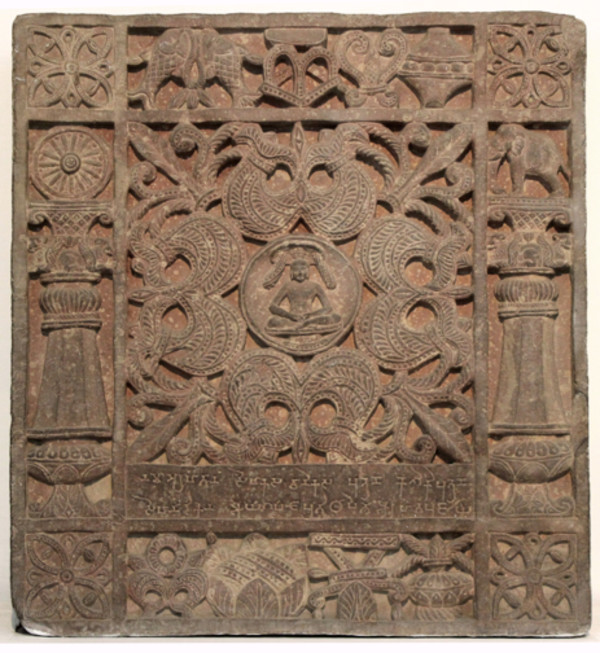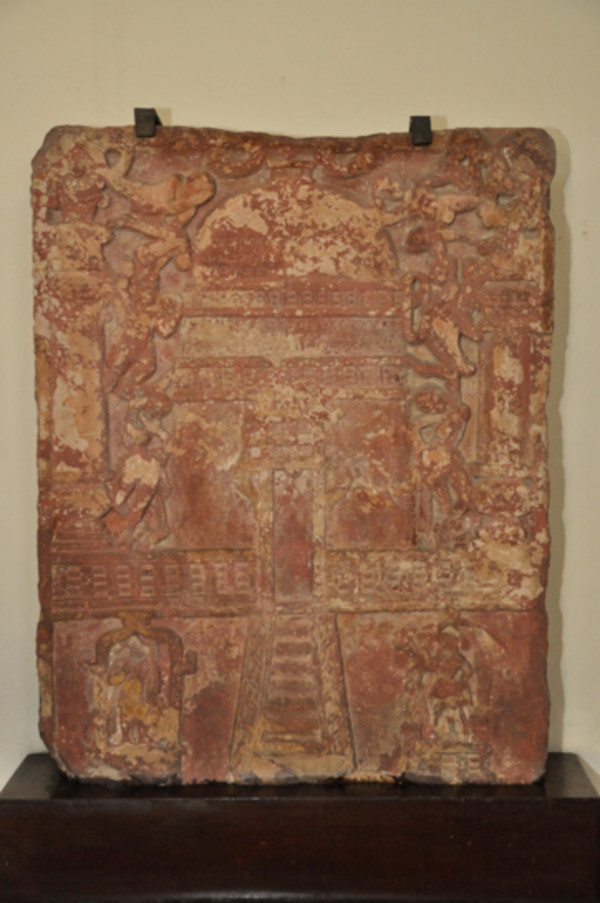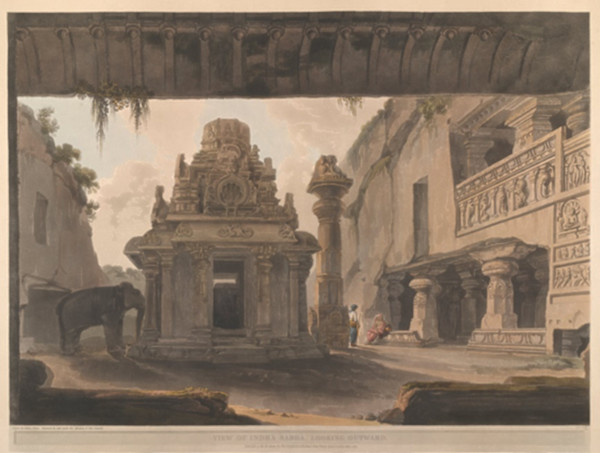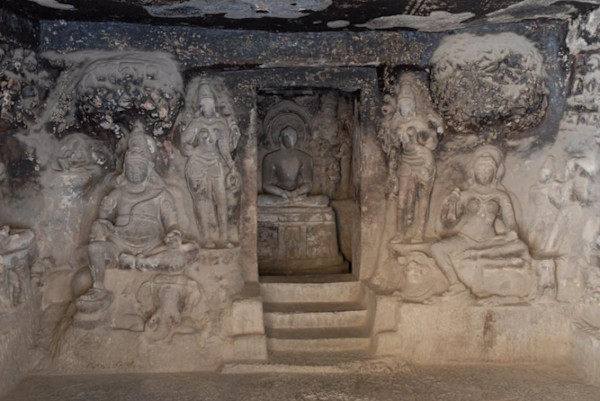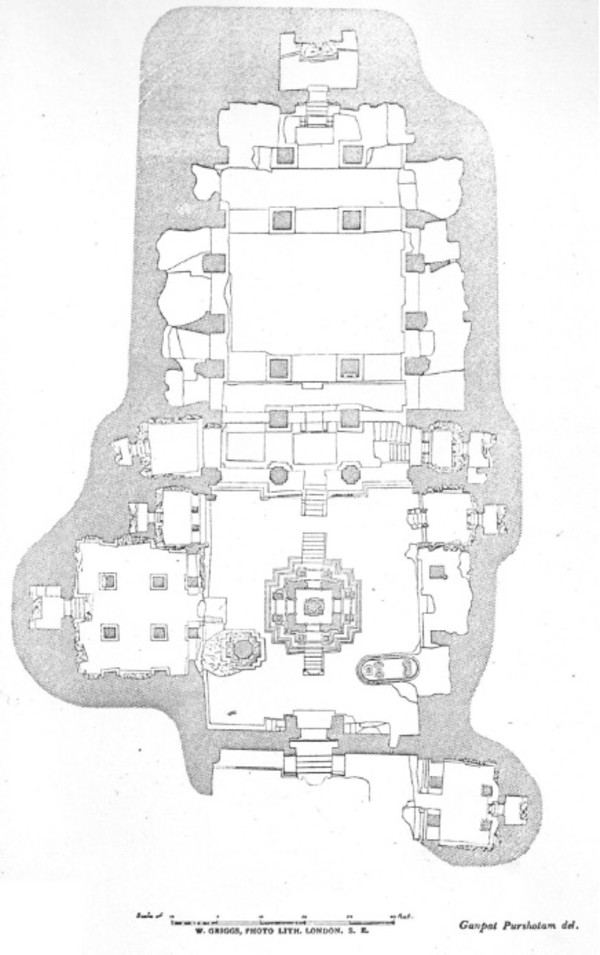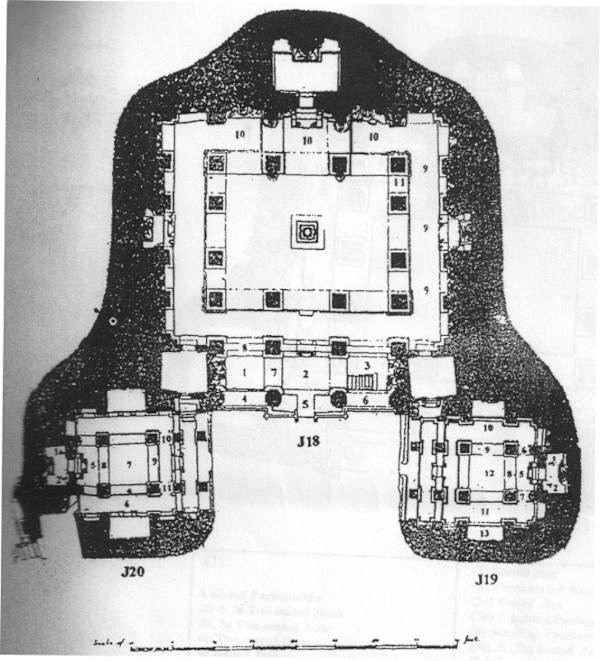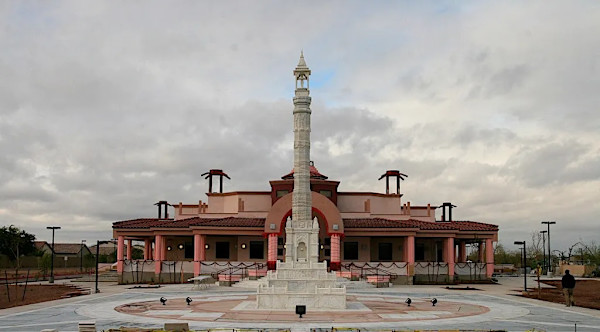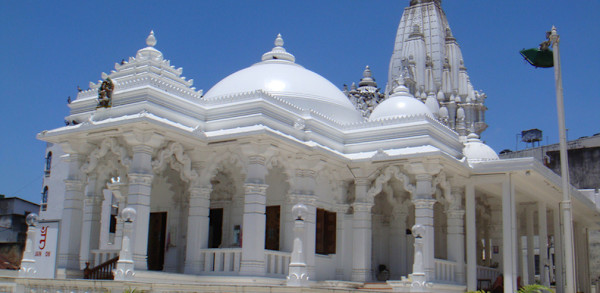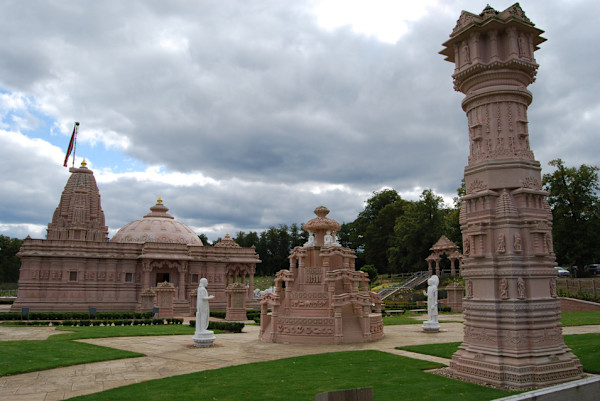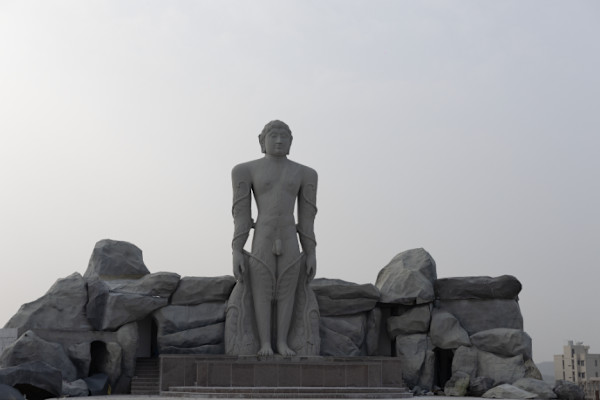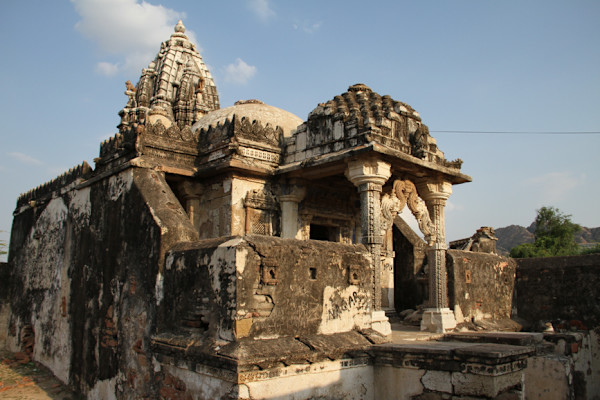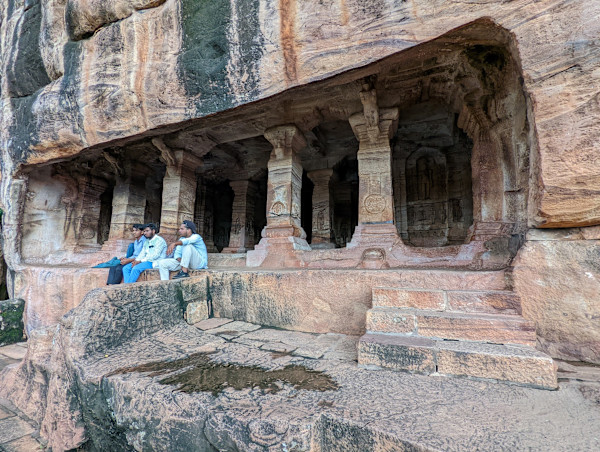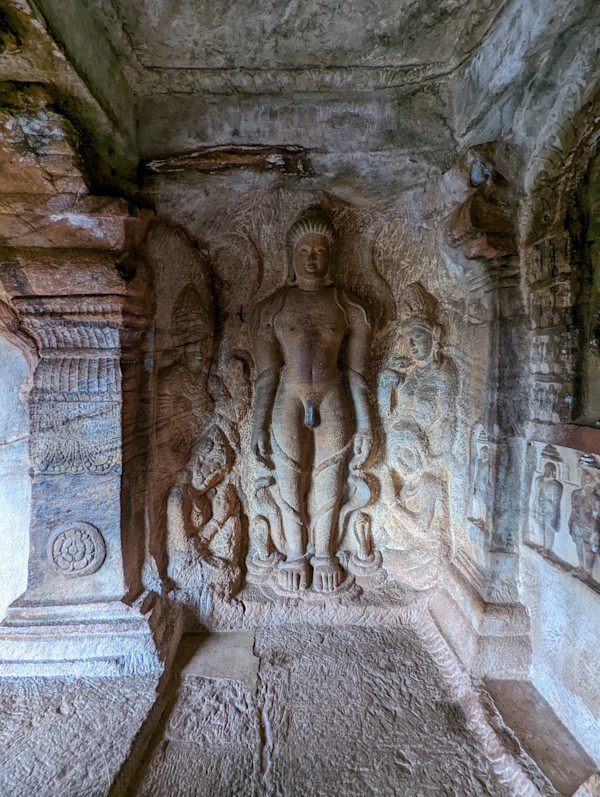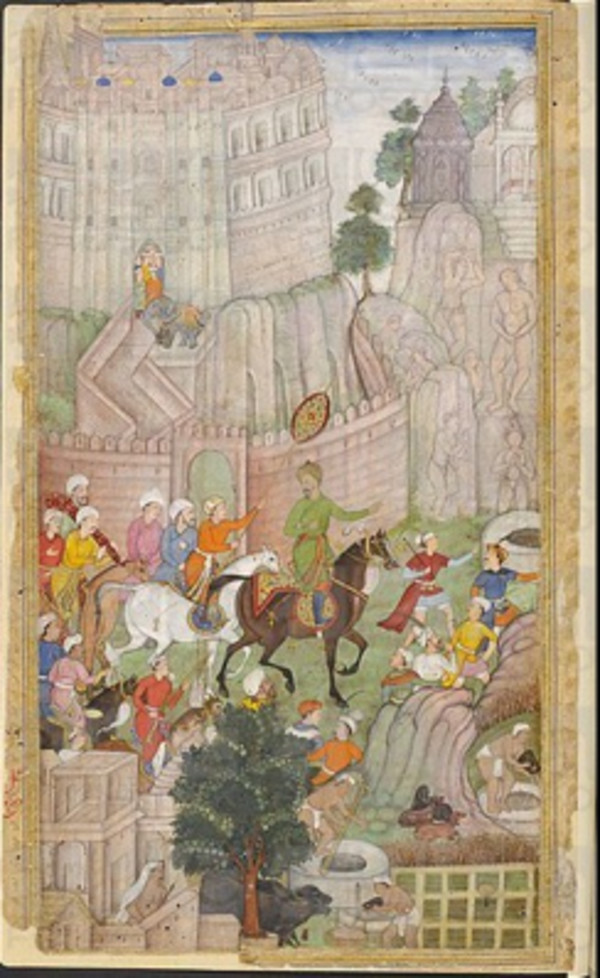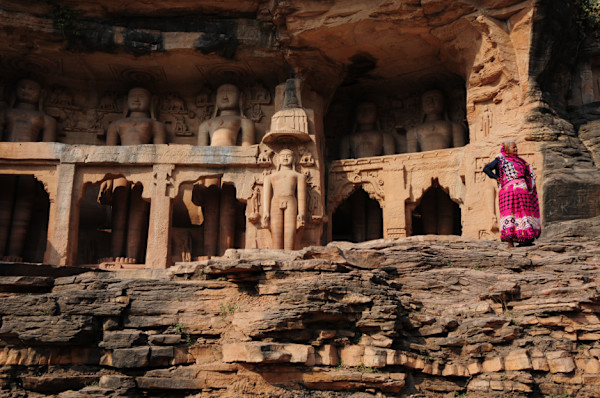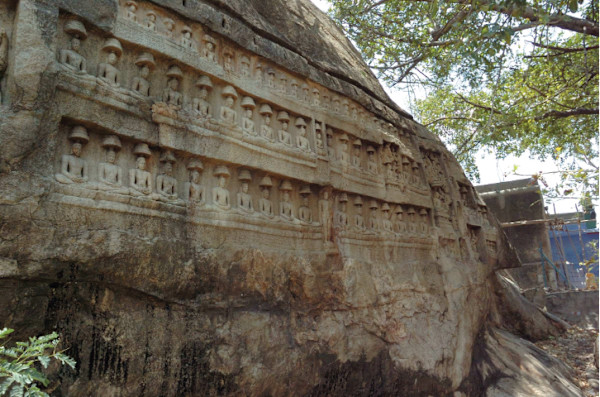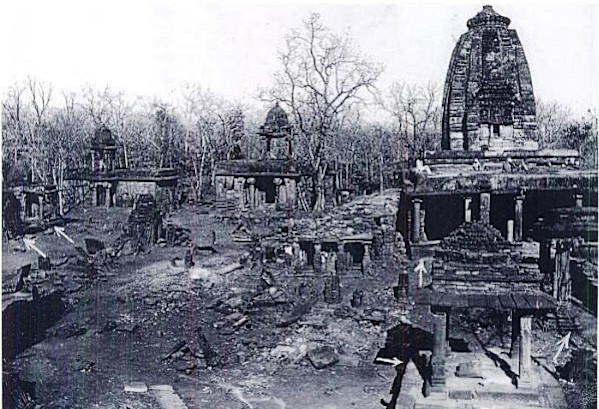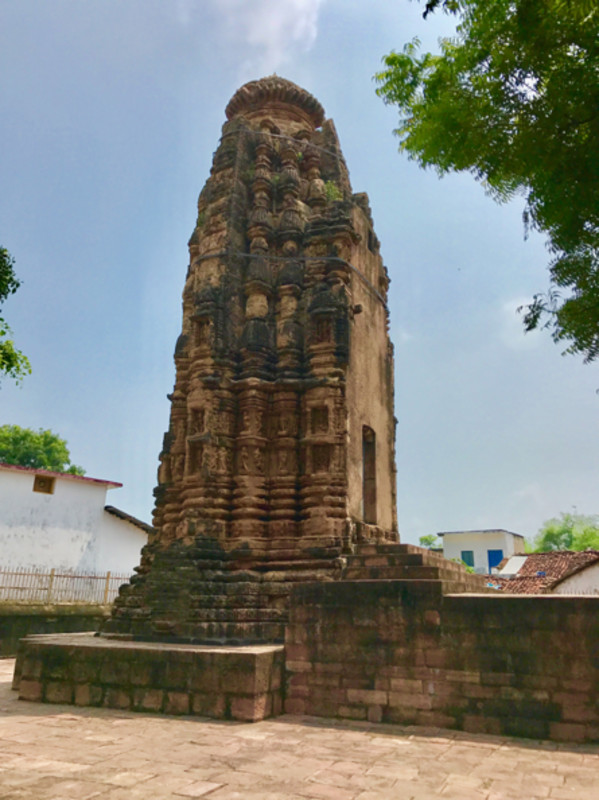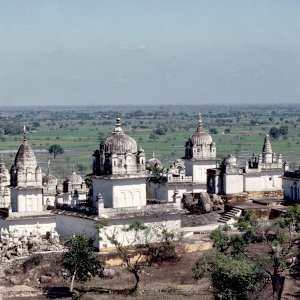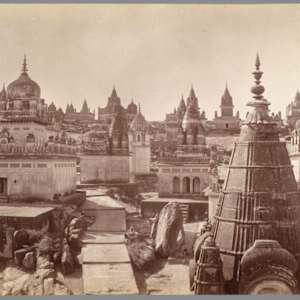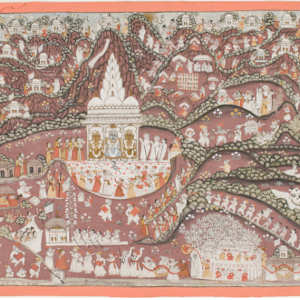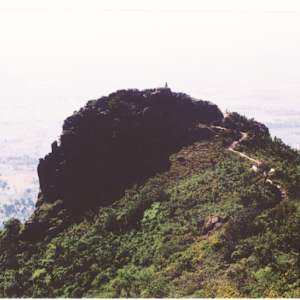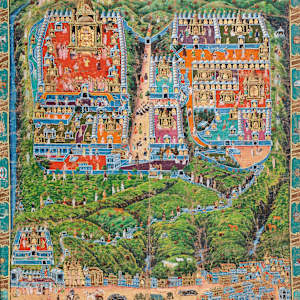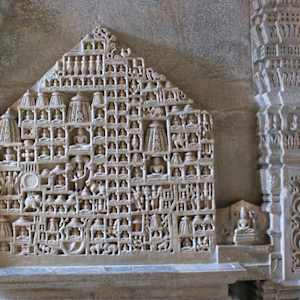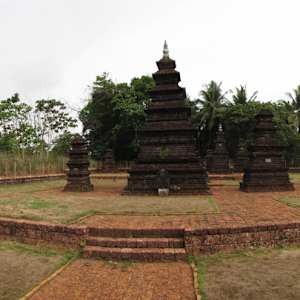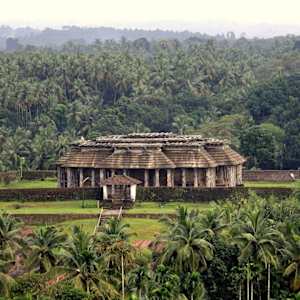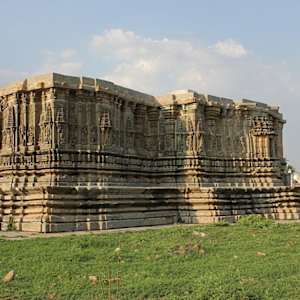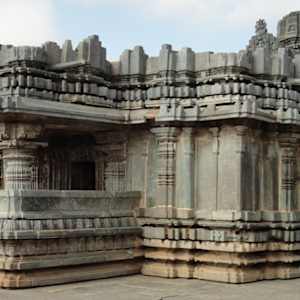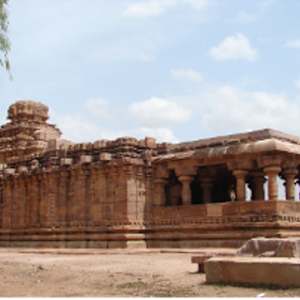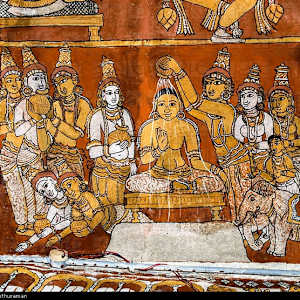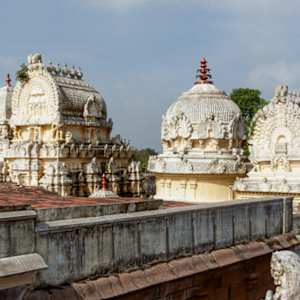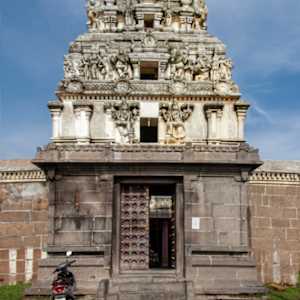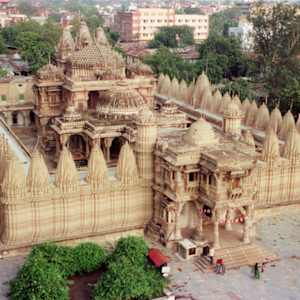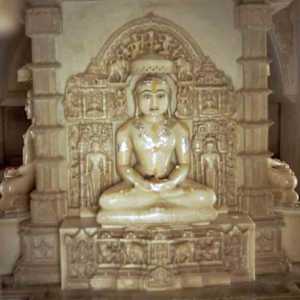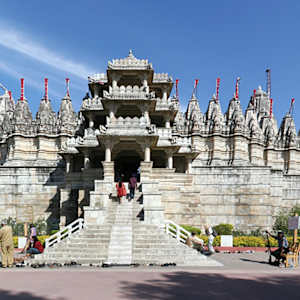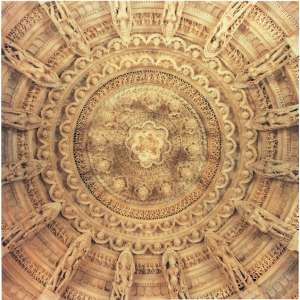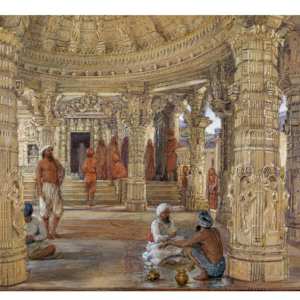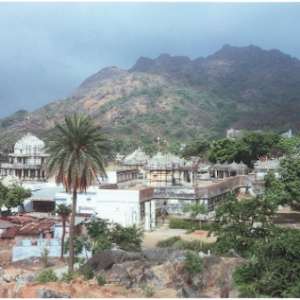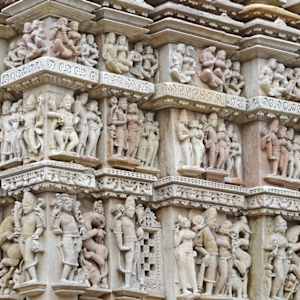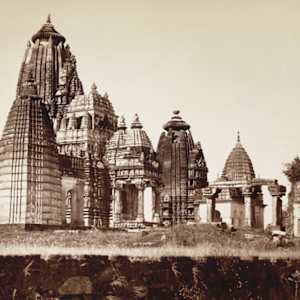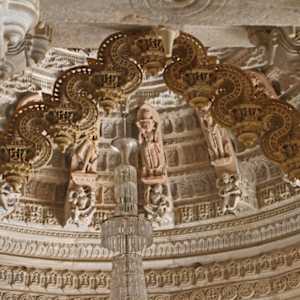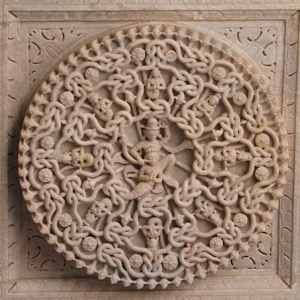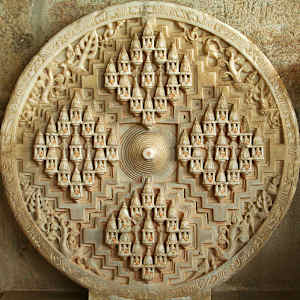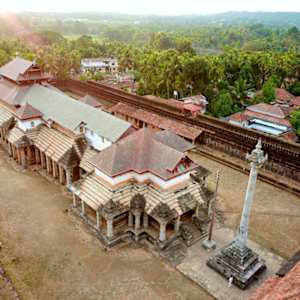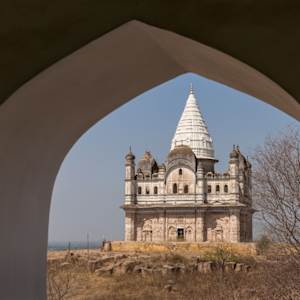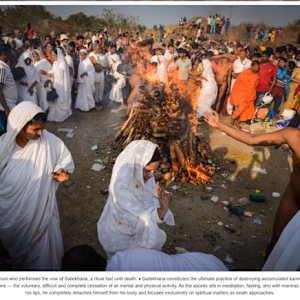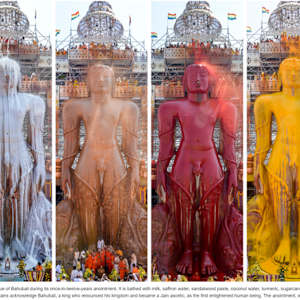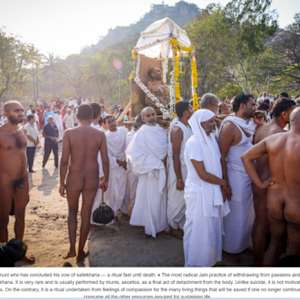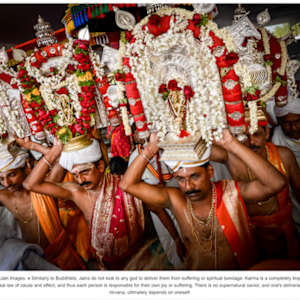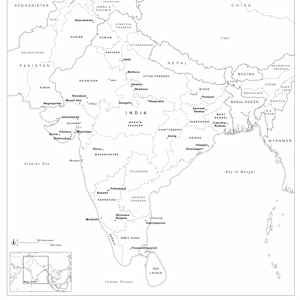Collecting Devotion: Temples to Jinas

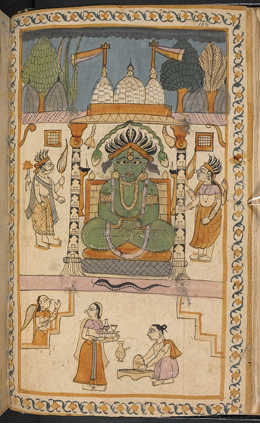
Parshva, the 23rd Jina, enshrined in a temple with attendants, worshippers, and accessories, such as sandalwood being prepared for worship. A folio from the Sukasaptati or The seventy tales of the parrot. [ The Erskine collection], Ink and color on paper, 24 x 16 cms, Gujarat. 17th - 18th century. Credit. From the British Library Archive, Add.26519
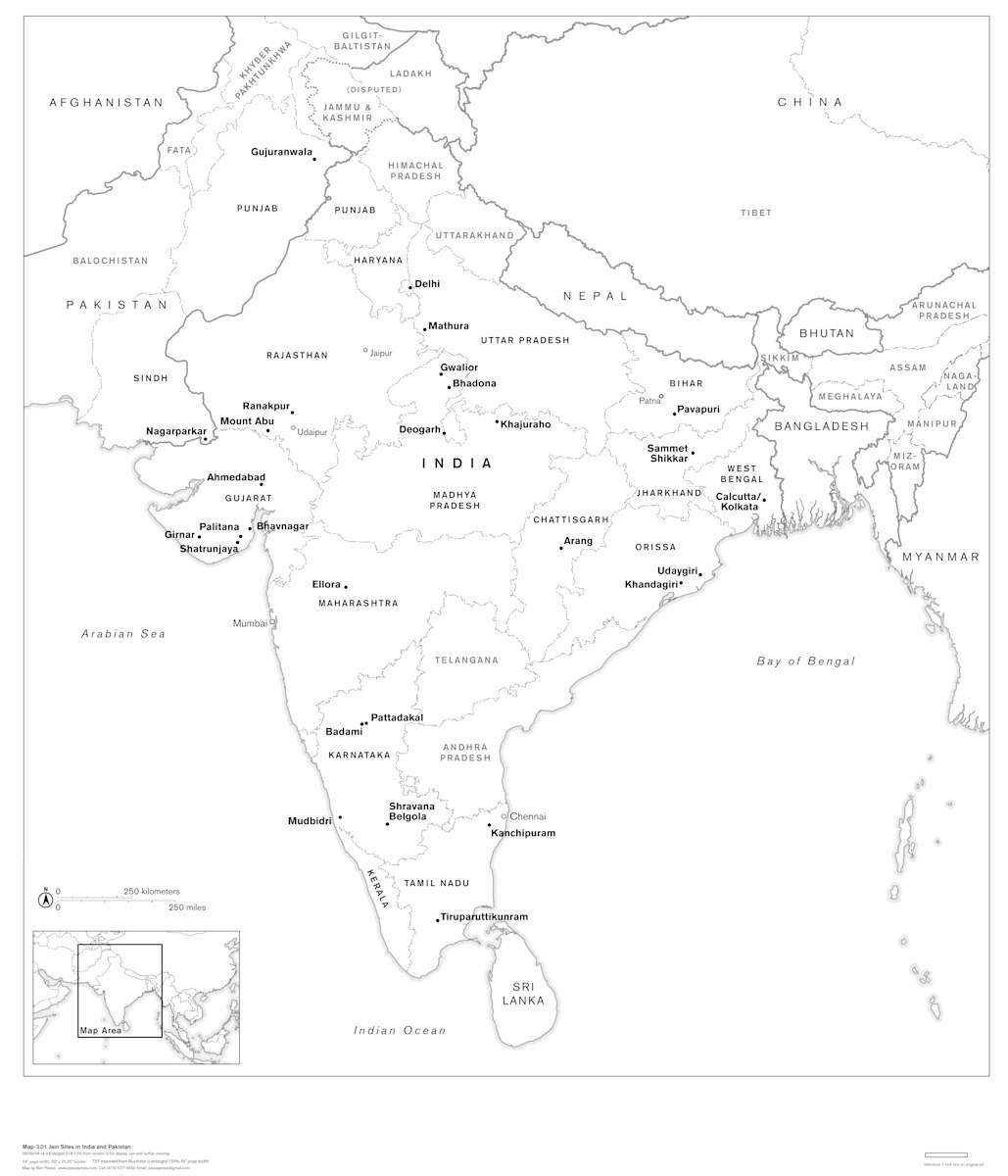
Map of Selected Jain Sites in India and Pakistan
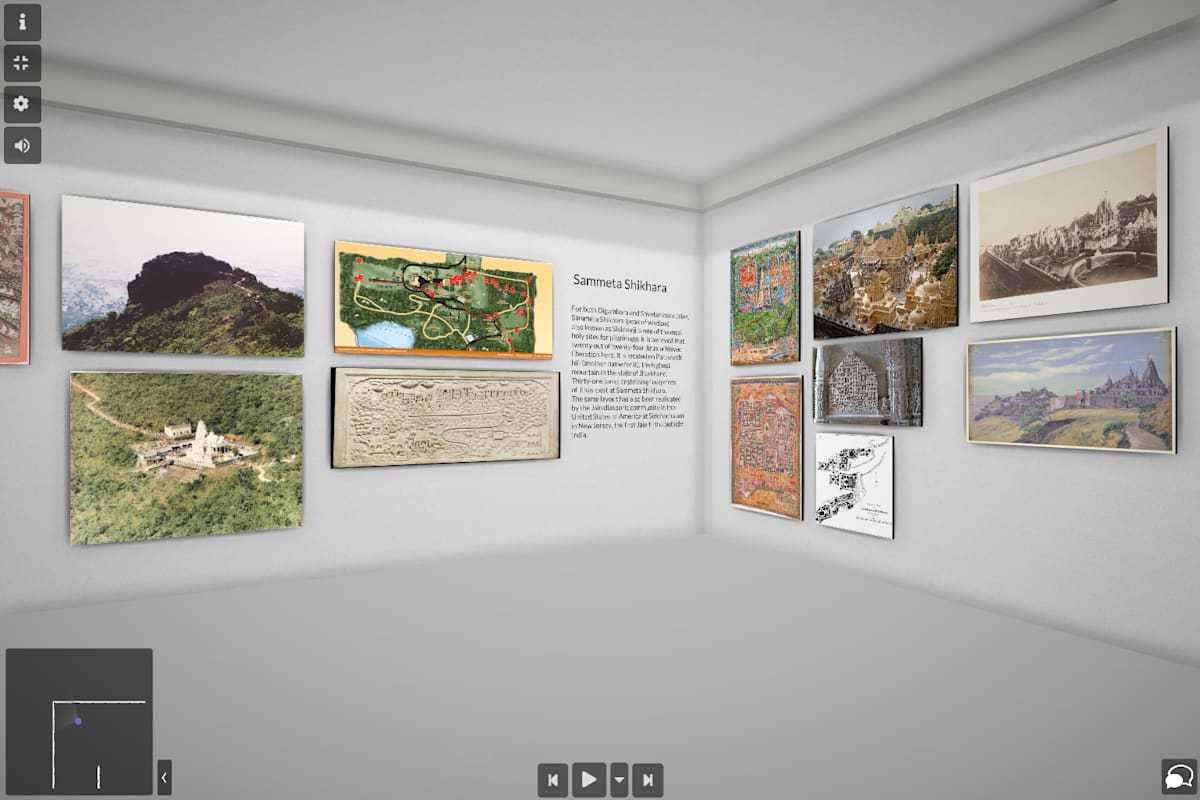

We are grateful to the Uberoi Foundation for Religious Studies for their generous grant for the purpose of digitizing the exhibition.
This exhibition can also be viewed as a 3-D virtual exhibition at this link: https://www.artsteps.com/view/68436daf35f086902cc12822
Jainism is one of the oldest religious traditions that originated in India and was well-established by the 6th-5th centuries BCE. Its adherents follow the teachings of the Jinas and are known as Jains. Jina literally means “conqueror” and refers to one in a line of twenty-four human teachers who appeared one after the other in cyclical cosmic periods of time. They conquered all worldly attachments and achieved final liberation through asceticism and meditative practices and taught the path of Jainism. Each Jina’s birth, conception, renunciation, omniscience and final liberation from the cycle of birth and death, are especially important events celebrated by Jains. Jinas are also known as tirthankaras or “ford makers” who have crossed the ocean of rebirth and established the four-fold Jain community of laymen, laywomen, male mendicants and female mendicants. Mahavira, the twenty-fourth Jina, for whom we have historical evidence, preached in eastern India around the 6th -5th centuries BCE, and it is his teachings that are available to Jains in the form of texts. The five major principles to be followed to the best of one’s ability include non-violence, non-possession, truthfulness, not stealing, and celibacy. Jains today are amongst the strongest advocates of non-violence and champion the causes of vegetarianism, environmentalism and sustainability. However, based on some differences in practice and belief, Jains are divided into sects, the two main ones being Shvetambaras whose ascetics are white-clad and Digambaras whose ascetics remain unclothed. Enlightened teachers (arhats, also a synonym for Jinas), liberated souls (siddhas), mendicant leaders (acharyas), mendicant tutors (upadhyayas), and mendicants (sadhus) comprise the ‘five supreme beings’ and are all considered worthy of respect, emulation and veneration in the Jain ritual and devotional culture.
Revering Jinas is one of the most important rituals for the Jains, whose major religious duties include dedicating icons, building temples, and commissioning copies of sacred books, along with charitable deeds. Richly ornamented Jain temples dedicated to one of the twenty-four Jinas with a host of gods and goddesses in attendance, are an important material expression of faith and since the nineteenth century, Jain temples sponsored by the diasporic community have proliferated globally as well. “Collecting Devotion: Temples to Jinas” is a photo exhibition of Jain temples primarily in India. Beginning with one of the earliest material expressions of Jain devotion, namely carved stone tablets and cave temples, this exhibition brings together a versatile array of Jain sponsored architectural traditions from different regions in India. We invite viewers to experience tangible expressions of Jain piety and devotion in all its richness and diversity, belying the common notion of Jainism being a dry ascetic -centered tradition.
Curatorial Group: Nandita Punj, Claudia Brown, Huixian Dong, Colin Pearson
3D Gallery: Zhang Jie
Researcher: Jinglin Li
Special Thanks: Robert J. Del Bonta
Arizona State University Grants and Sponsors:
Humanities Institute
Herberger Institute for Design and the Arts Grant
Center for the Study of Religion and Conflict (Spirituality and Public Life Initiative)
The Asia Center
South Asia Council
School of Historical, Philosophical and Religious Studies
Department of Religious Studies
Art History Faculty
We are grateful to the Jain Center of Greater Phoenix,
especially the families of Dr. Dilip Bobra, Dr. Kirit Gosalia,
and Mr. Hans Maru for their support of Jain Studies at ASU.
